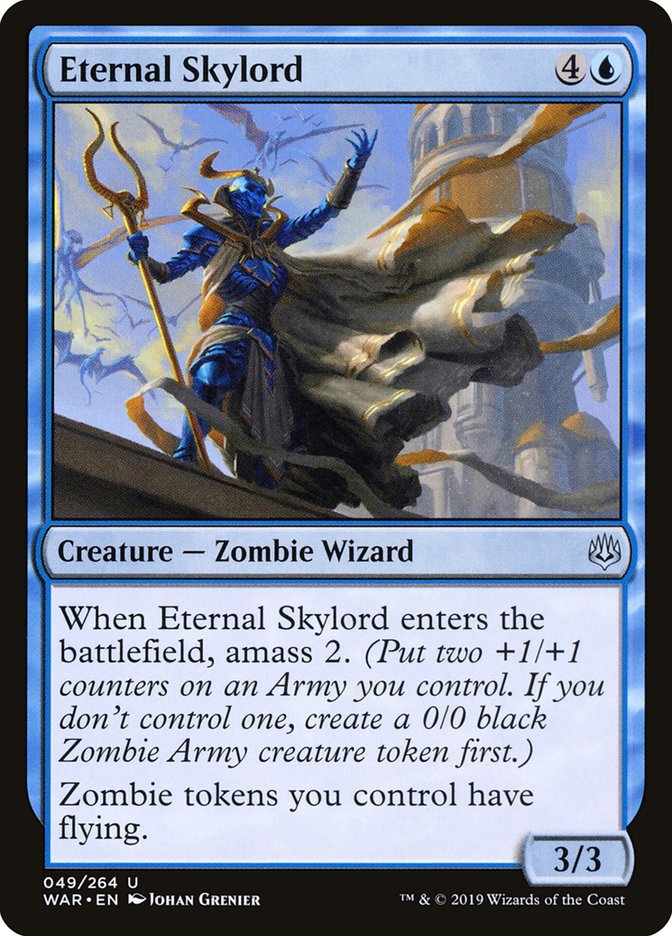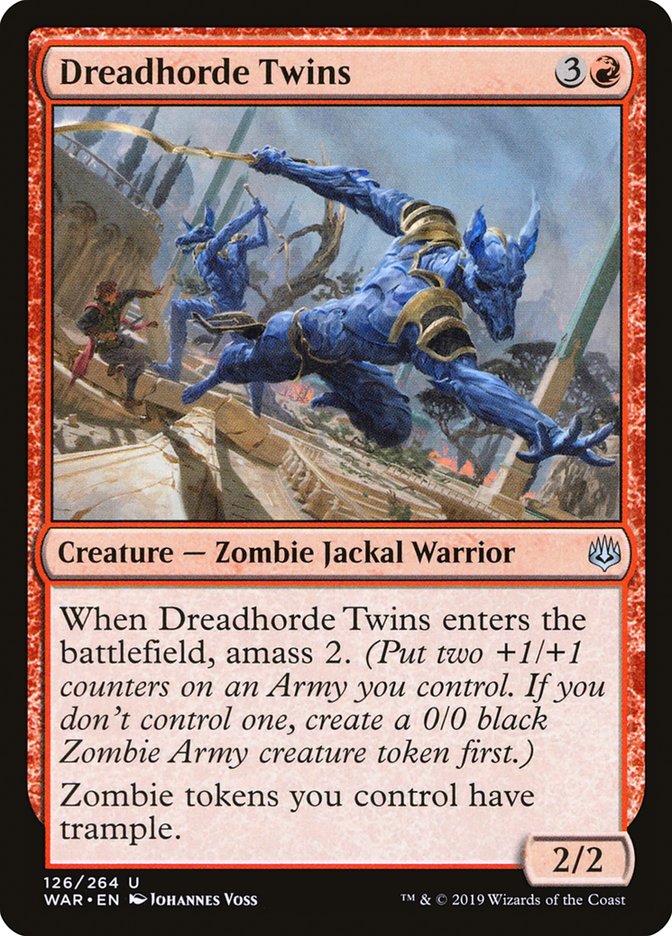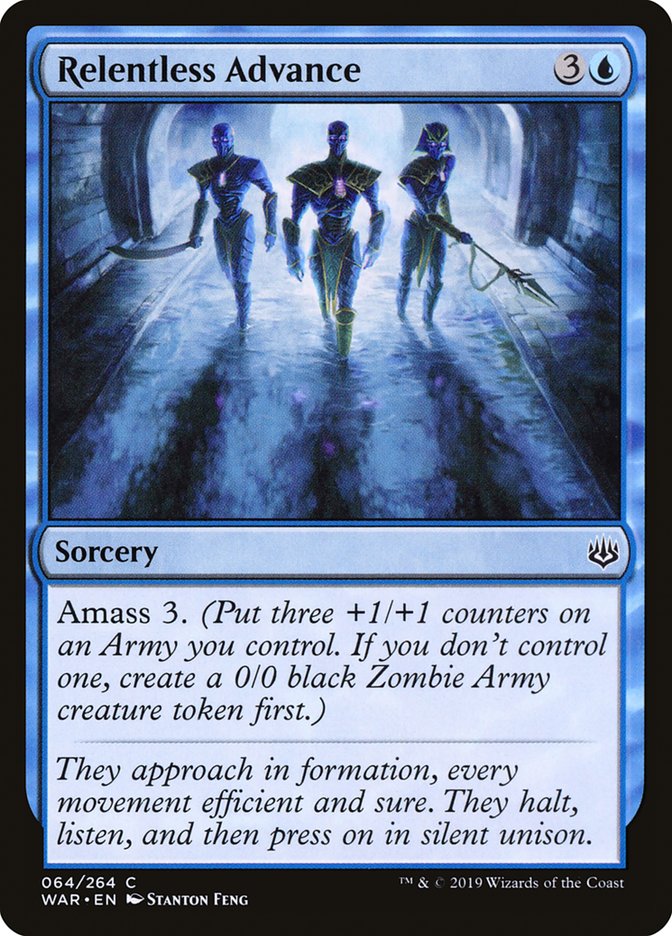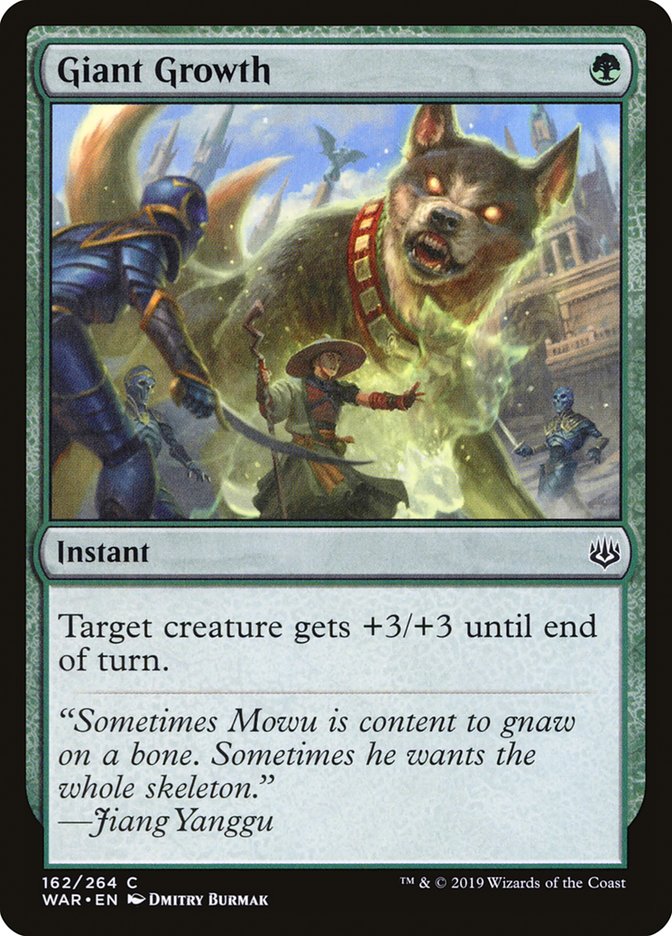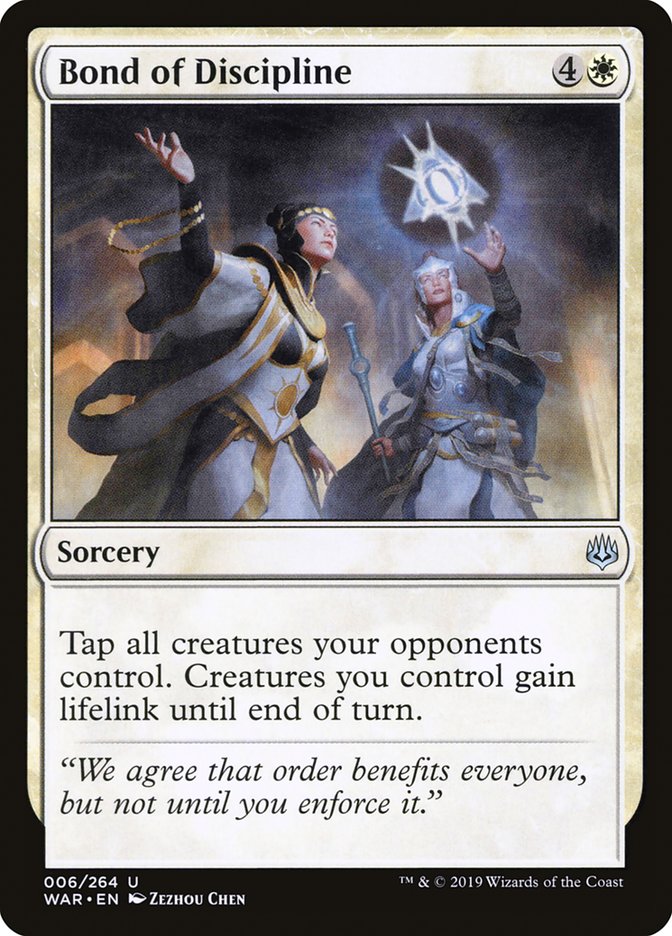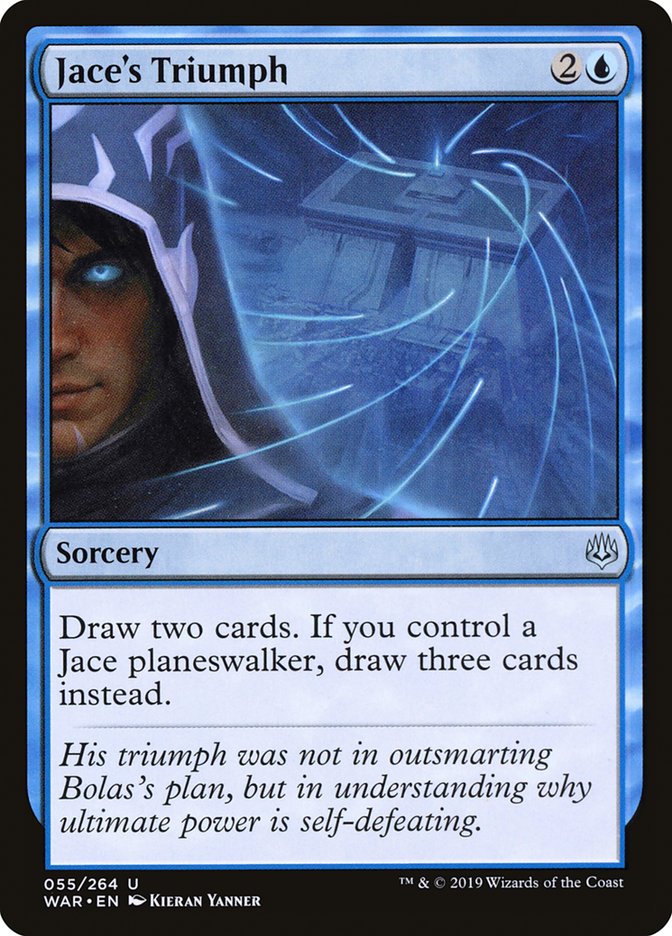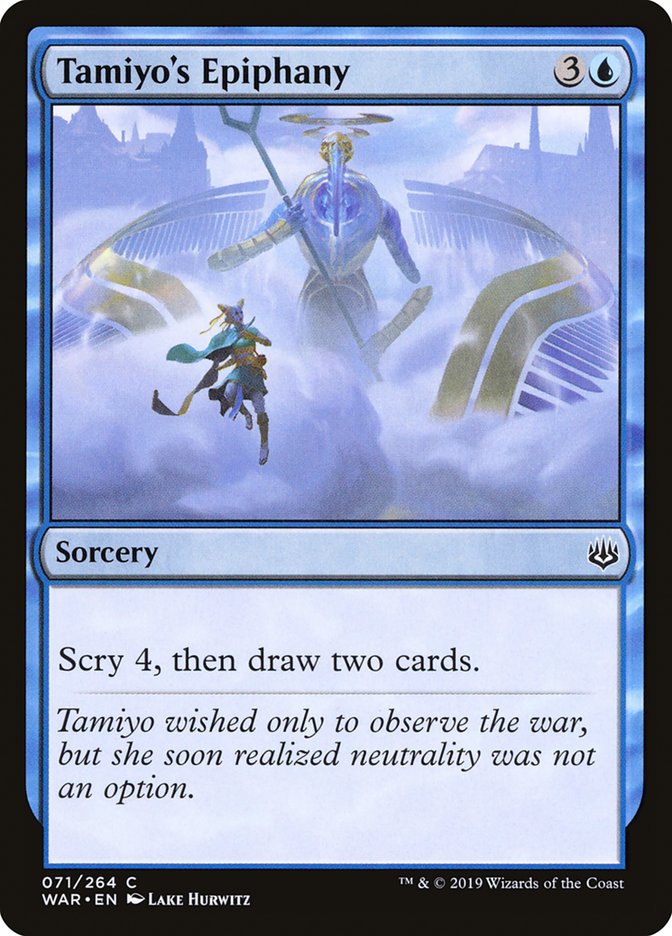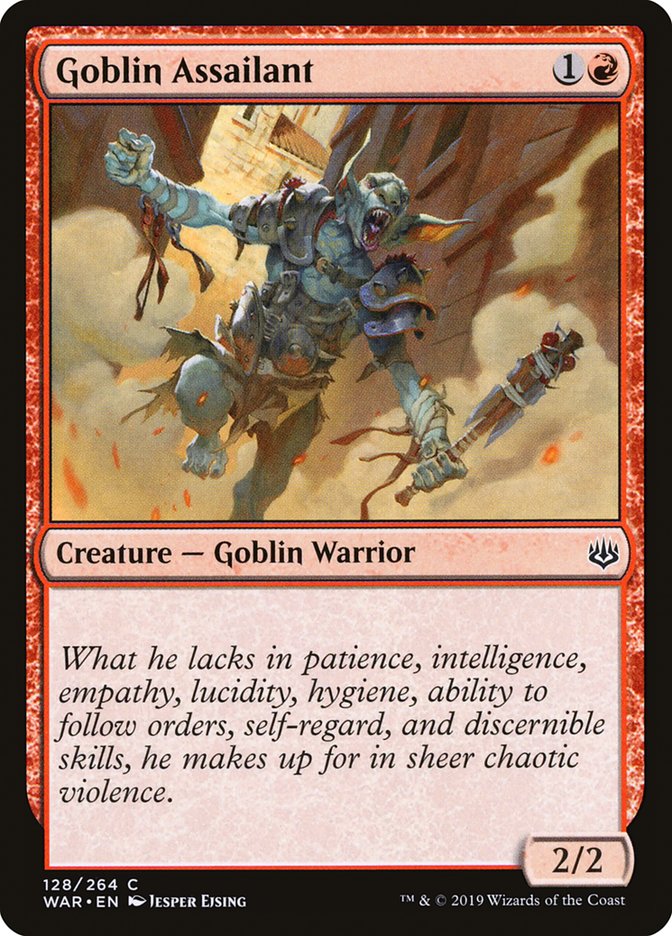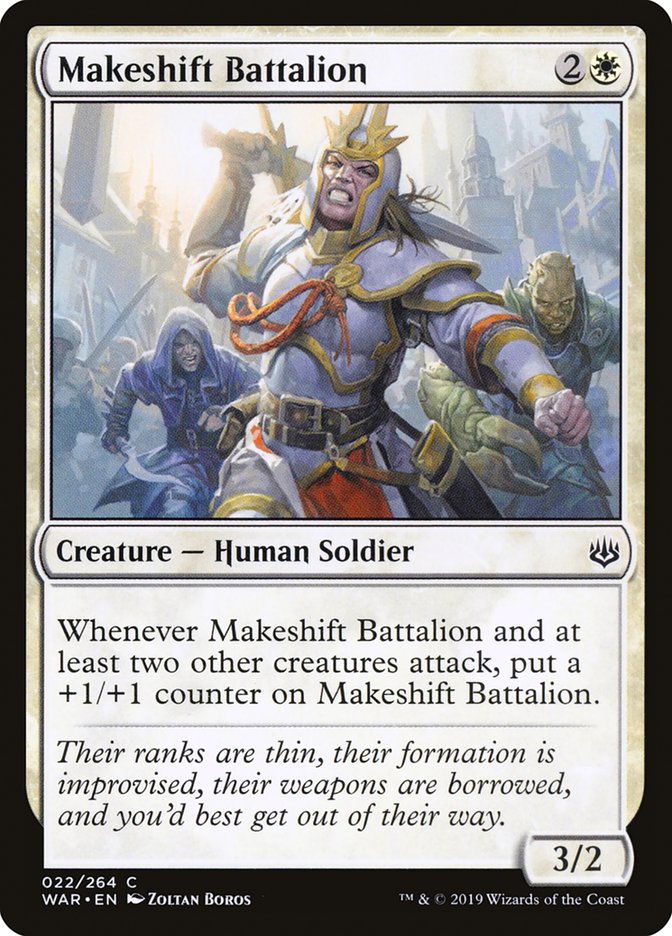In War of the Spark Booster Draft, there are at least 24 planeswalkers opened in any given draft. You can expect to play against a planeswalker in almost every single game. That expectation changes the value of a variety of types of cards in the set.
Effects That Get Better
Evasion is always good in Limited, but in War of the Spark I expect it to be more valuable than ever before. Wind Drake has been begrudgingly playable for a while now, but it would be much better in this set. Many uncommon planeswalkers have -2 loyalty abilities, hence attacking a planeswalker for two damage is the bar for considering an attack as card advantage.
War of the Spark introduces the potential of card advantage to cards that enable such attacks.
Amass is a fascinating mechanic. It can either be card advantage, providing an additional body on the battlefield, or behave similar to an Aura. The evasive abilities granted by Eternal Skylord and Dreadhorde Twins pushes them to premium uncommons. In most Limited environments, a creature that creates a token when it enters the battlefield is valuable. However, these cards won’t always do that, given the play patterns of amass. But when amass functions like an Aura, these cards boost a creature and provide it with evasion in order to attack a planeswalker, which can be more valuable.
Even without the addition of evasion, amass cards will help pressure planeswalkers. If an opponent leaves back a 3/3 to defend their planeswalker from a 2/2 Zombie Army, Relentless Advance is card advantage because they will either chump block the Zombie Army or lose their planeswalker.
Combat tricks like Giant Growth can also take down planeswalkers and creatures alike. The big takeaway from my last article is that attacking in this format should put your opponent between a rock and a hard place. Combat is an exchange of resources, and players lose life, creatures, and/or planeswalkers according to this exchange. Combat tricks have the benefit of surprising your opponent by altering the expectation of this exchange for a small amount of mana. While this is the case in any format, the introduction of planeswalkers at uncommon drastically improves their utility.
The last type of card that gains additional value in War of the Spark: cards that have a large impact on combat for one turn.
Evasive threats and augmentations like amass provide a small advantage that spans the game, combat tricks can change the expectation of a key resource exchange, but a card like Bond of Discipline can decimate three planeswalkers out of nowhere. These cards have an extremely high ceiling, but the floor of “I’m behind and can’t afford to make attacks, so this card is useless” is still daunting.
This floor is why effects like this in most formats are relegated to aggressive decks that plan to be ahead and already concede percentage points should they fall behind. But in War of the Spark, the additional texture given to cards that enable big attacks makes them worthwhile inclusions in more than just aggressive decks.
Effects That Get Worse
Almost all the cards included in War of the Spark Draft decks must affect combat in some way. There were decks in Ravnica Allegiance filled to the brim with card draw and lifegain. Those decks didn’t care to play many creatures. That won’t be feasible in War of the Spark. It’s crucial to include a density of ways to interact with planeswalkers, and the best way to do that is to play creatures alongside cards that are proactive in combat.
Divination has been a bread-and-butter Limited card for years. It was a premium common in Dominaria and a solid playable in Magic 2019. But Jace’s Triumph is not a card I expect to make my deck every time in this format.
Most Limited formats are lacking in terms of card advantage, and cards like Jace’s Triumph are the common ways to get card advantage, making them a sought-after resource. Planeswalkers fill that role in War of the Spark, and unlike Divination, planeswalkers have a presence on the battlefield. Many even create creatures that can pressure opposing planeswalkers.
I still expect card draw to be playable, but it does get worse. Tamiyo’s Epiphany is one of the most powerful commons we’ve ever seen, but playing it comes at a risk of losing the resource war on the battlefield, even though it wins the resource war in the hand.
Aggressive decks are more than the sum of their parts. They’re built of unassuming, cheap creatures that often wheel during the draft. Nobody is excited to put a Goblin Assailant or Makeshift Battalion in their deck, but aggressive decks need such a density of critters to attack with so they’ll take what they can get. And the density of such creatures is what makes them so good at dealing twenty damage.
I’ll say it again.
The starting life total in War of the Spark draft is not twenty. It’s higher. How much higher is impossible to tell prior to release, but I’m certain it’s higher. Sometimes it will be correct to ignore a planeswalker, but many times a planeswalker will require attention. Every time you attack a planeswalker, you’re giving up damage. A successful deck in this format must be capable of dealing more than twenty damage with ease. If the aggressive decks in this format don’t look different from normal, they will struggle.
What This Means for the Format
I expect the density of planeswalkers in this set to focus the archetypal spectrum of decks towards midrange. In almost any Limited format, any given deck is some form of midrange, but this will be exacerbated in War of the Spark. The focus on card advantage within creatures and cards on the battlefield rather than cards in hand, coupled with an effectively higher starting life total, constrains the potency of both aggressive and controlling decks. Controlling cards can still be valuable in order to win the resource war, and aggressive cards can still assist in pressuring planeswalkers, but the roles these cards play won’t be as linear as they usually are in their preferred archetypes.


